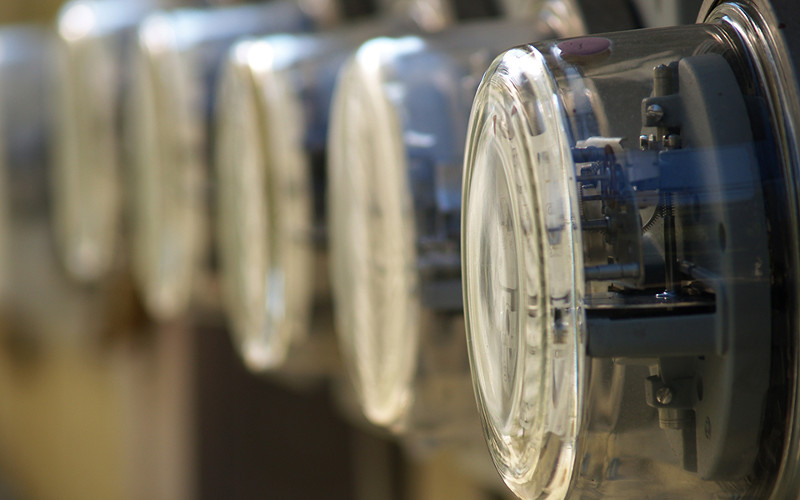In the years that pv magazine has been monitoring utility attempts to stop distributed solar with rate design, we’ve seen many different approaches. But nothing that we have seen to date quite matches the fixed-charge Frankenstein that Oncor proposed on earlier this month for its customers who have the temerity to install solar or batteries.
The Texas utility is proposing that its customers who have grid-tied distributed energy resources (DER) – solar, micro-wind turbines or batteries – 3 kW or greater would pay a minimum bill that would be based on $3.53 for every kilowatt of maximum demand that this customer has had, going back to whenever they installed a smart meter.
Because that was not complicated or punishing enough, if Oncor can charge the customer more according to its standard residential rate, it will.
“It’s a pretty complicated minimum bill calculation that is going to be specific to each (solar) customer,” notes Benjamin Inskeep, a policy analyst at EQ Research.
In defending this weird mix of a demand charge and a fixed charge, Oncor argues that since transmission and distribution (T&D) upgrades are built based upon peak demand, its customers should pay a percentage of that peak. “Oncor builds its T&D system to serve the highest demand that will need to be served,” stated T. Michael Quinn, Oncor’s VP of strategy and chief technology officer, in testimony supporting the proposed change. “The ‘higher the peak demand a customer has, the more T&D assets that Oncor must build and maintain to meet that demand.”
However, this leap of logic does not take into account that a customer’s historical peak demand may or may not have even lined up with the system peak.
And in basing its charge on a customer’s historical demand, Oncor is going into territory that regulators tend to forbid. Despite multiple utility requests no public utility commission in the United States has approved a demand charge on residential customers to date, as they are too complicated and result in unpredictable bills.
According to EQ Research, even minimum bills that are discriminatory to solar customers are usually not approved. “It’s something that a lot of utilities have been proposing, but in general it hasn’t been very successful,” states EQ Research’s Inskeep.
Inskeep says that he has not been able to figure out what the typical minimum monthly charge for a customer who installs PV would be if Oncor’s rate proposal is approved, but Dallas News estimates it at around $40.
It gets worse. PV system owners who have already installed systems under very different and less punitive rate designs would also be affected by the change, which could undermine the value of their investments.
The great irony to this attempt by Oncor to stomp out residential PV under a flimsy guise of making rates more rational and equitable is that the amount of rooftop solar installed in its service area to date is tiny. While Texas was the nation’s sixth-largest solar market in 2016 this is based mostly on big solar plants, and according to GTM Research residential solar made up only 12% of the capacity installed in the state last year.
However, this could be a big impact for the 10,000 or so solar customers in Oncor’s service area as well as empowering other utilities who seek to stop distributed solar. And it would shut off no small part of the potential residential solar market in Texas, as Oncor serves 10 million customers in North and West Texas, including the Dallas/Ft. Worth metro area.
This content is protected by copyright and may not be reused. If you want to cooperate with us and would like to reuse some of our content, please contact: editors@pv-magazine.com.









That is a good way for Oncor to stimulate load defection. What they are creating is a pricing model that will incentivize behind the meter solar and battery combinations that will take load off the grid, shave peak power occurances and shift loads to more favorable rates. A similar thing is happening more rapidly in Hawaii. Fortunatrely Texas does not have the high rates that Hawaii and Califonia does so that may slow the pace of load defection but it does put Oncor closer to the precipice of the classic utility death spiral.
At those rates, load defection will never pay itself off before the equipment is used up.
Charging those rates is solely to prevent new sign ups.
So, Oncor, prefers brown outs instead of the energy that solar power will provide during peak hours? Collin County is getting a huge influx of businesses. Is Oncor wanting to charge businesses that use solar power? Bad idea given that Oncor actually gave homeowners incentives to purchase solar power.
What Oncor is not revealing in this attempt is that they already get a delivery charge on every kilowatt. It’s on the kWh charge for energy delivered from the grid during hours with no sun or insufficient sun, and it’s deducted from the amount credited for excess solar production sent to the grid.